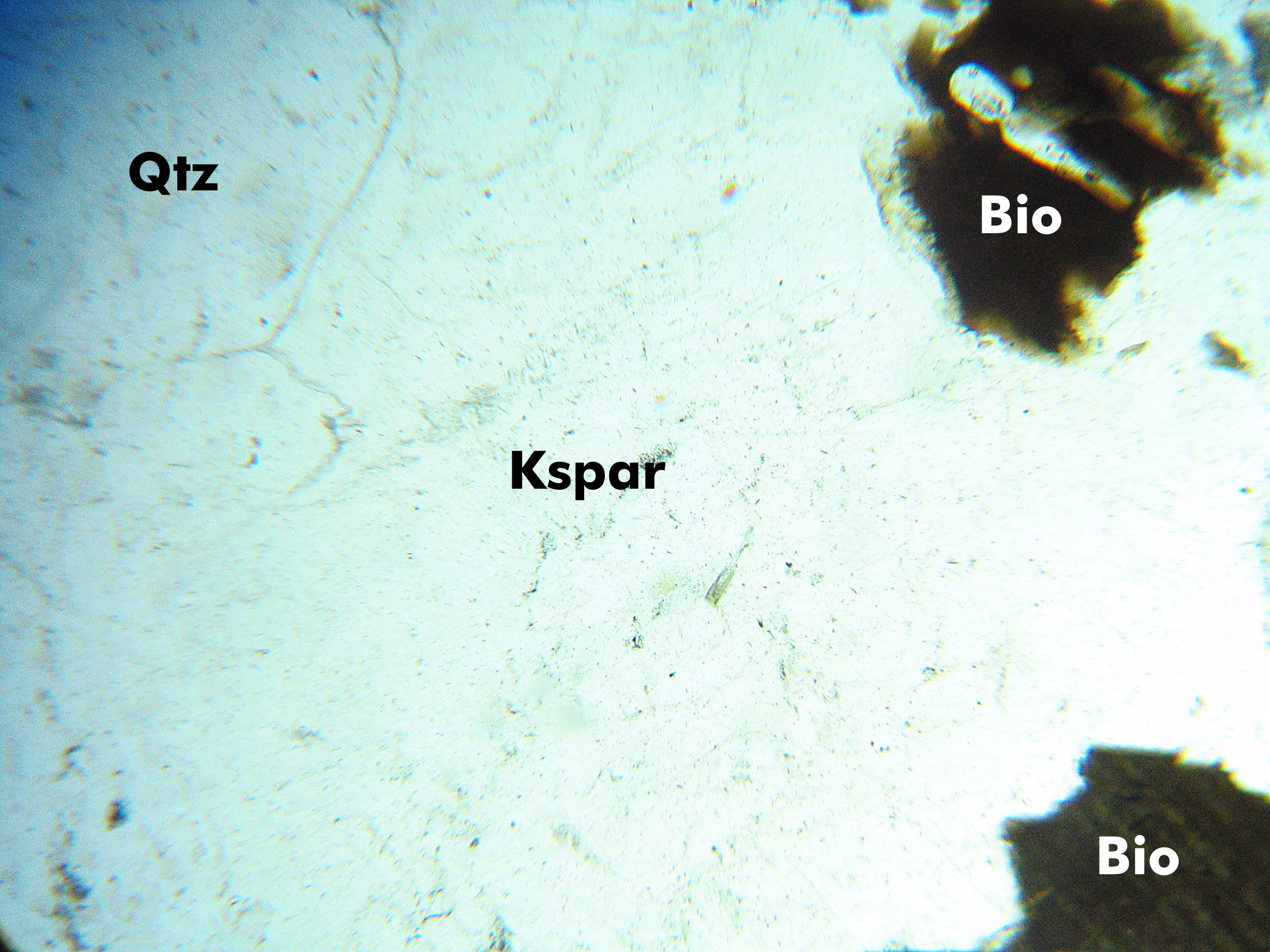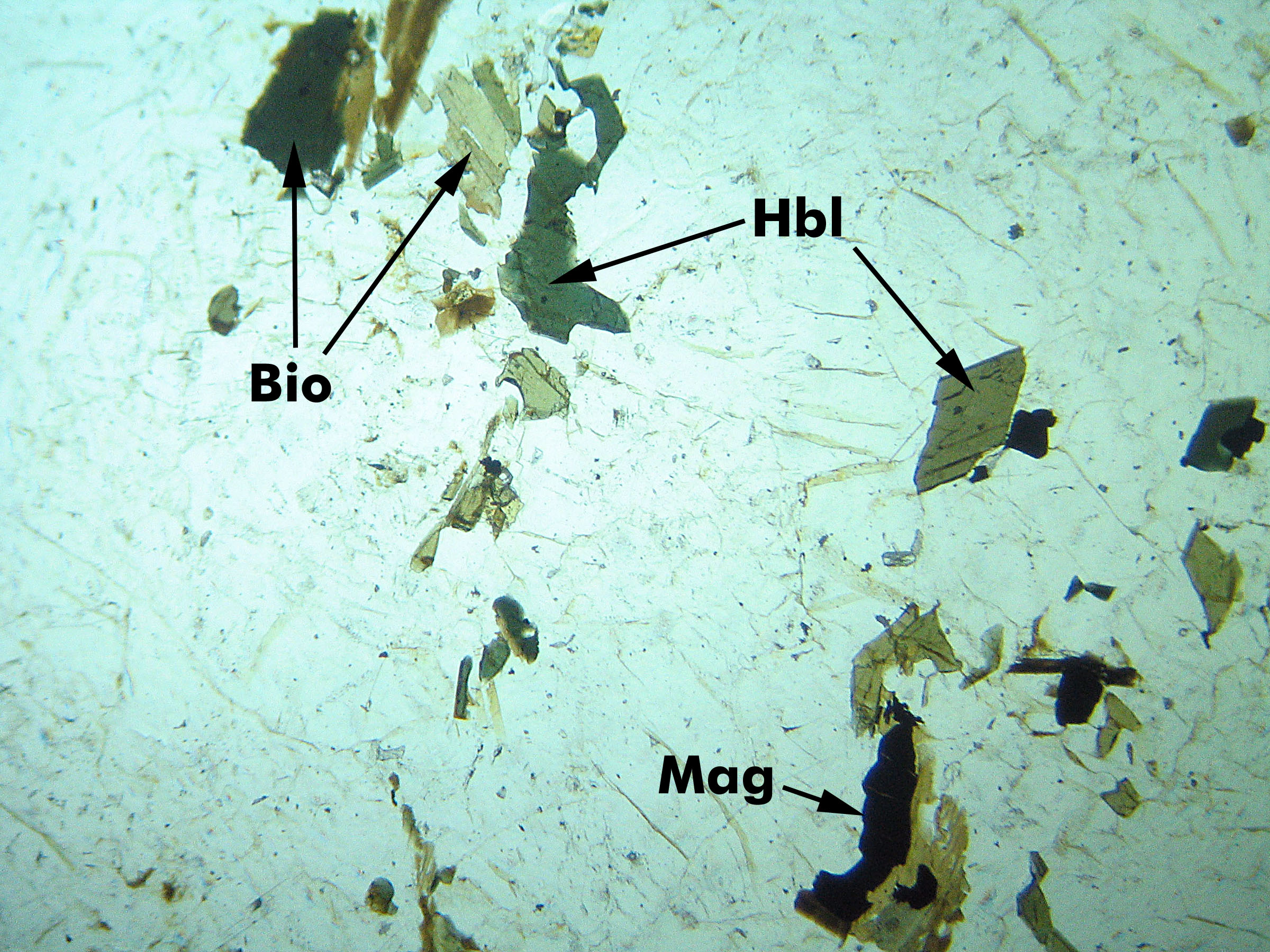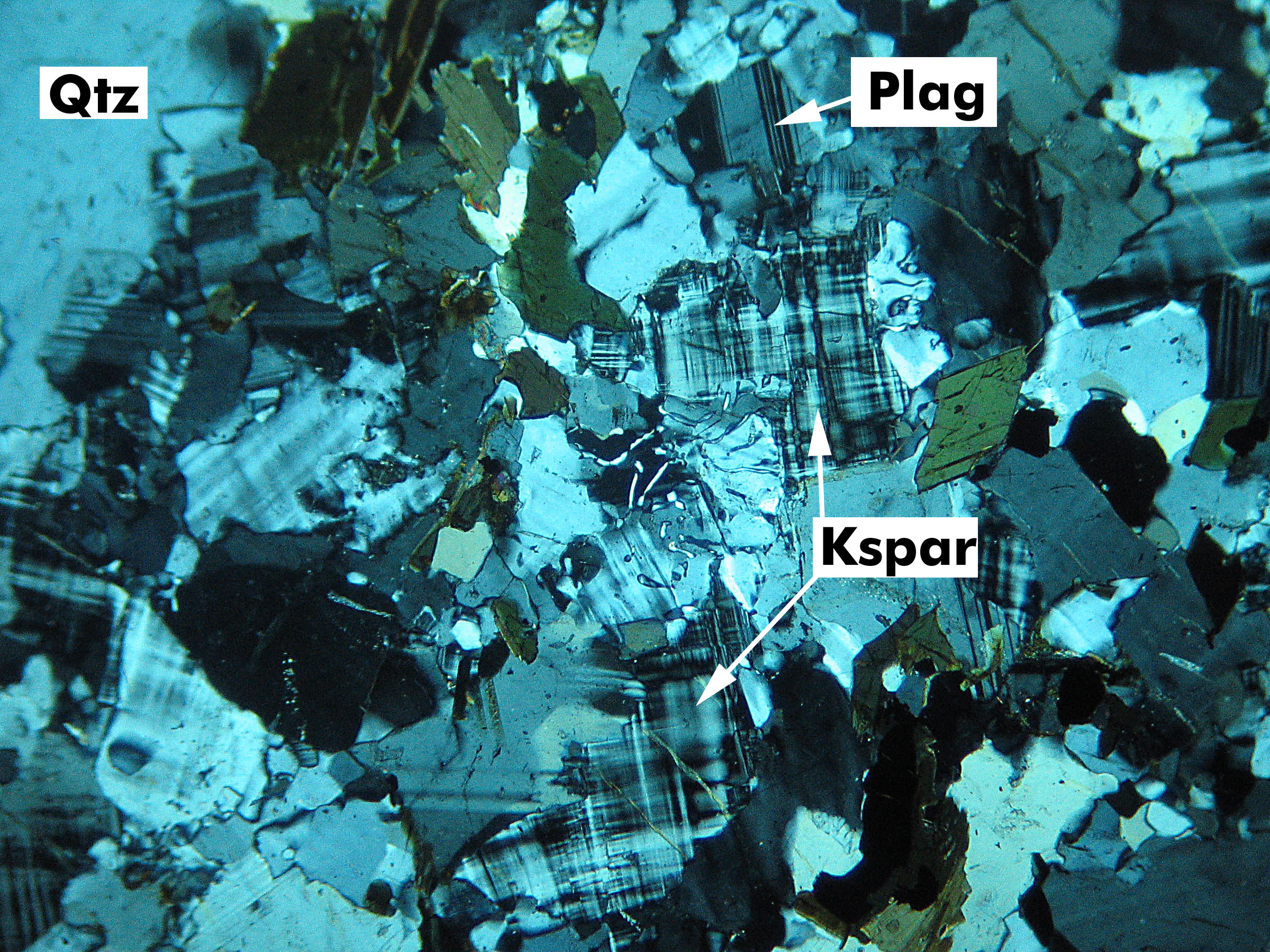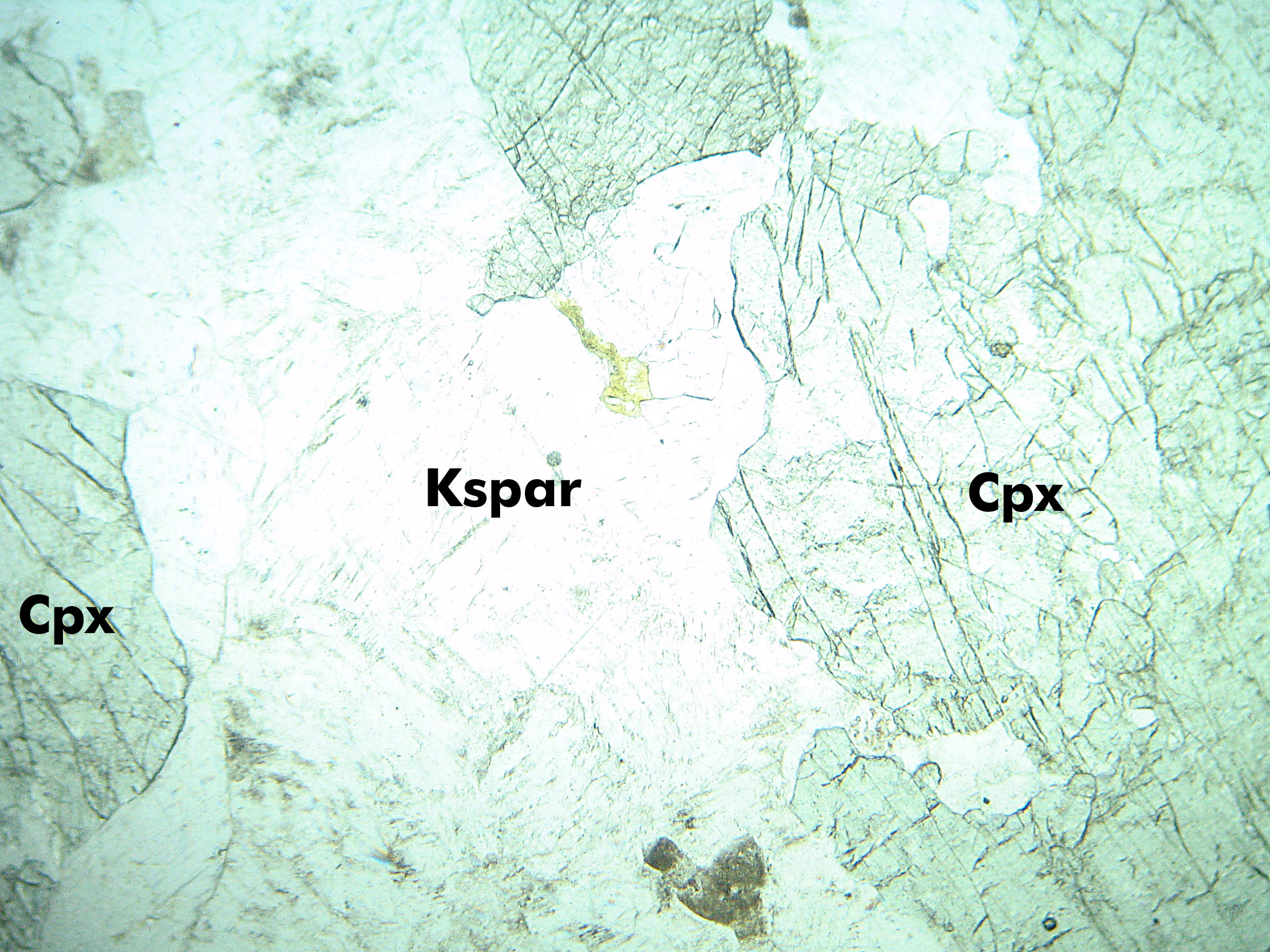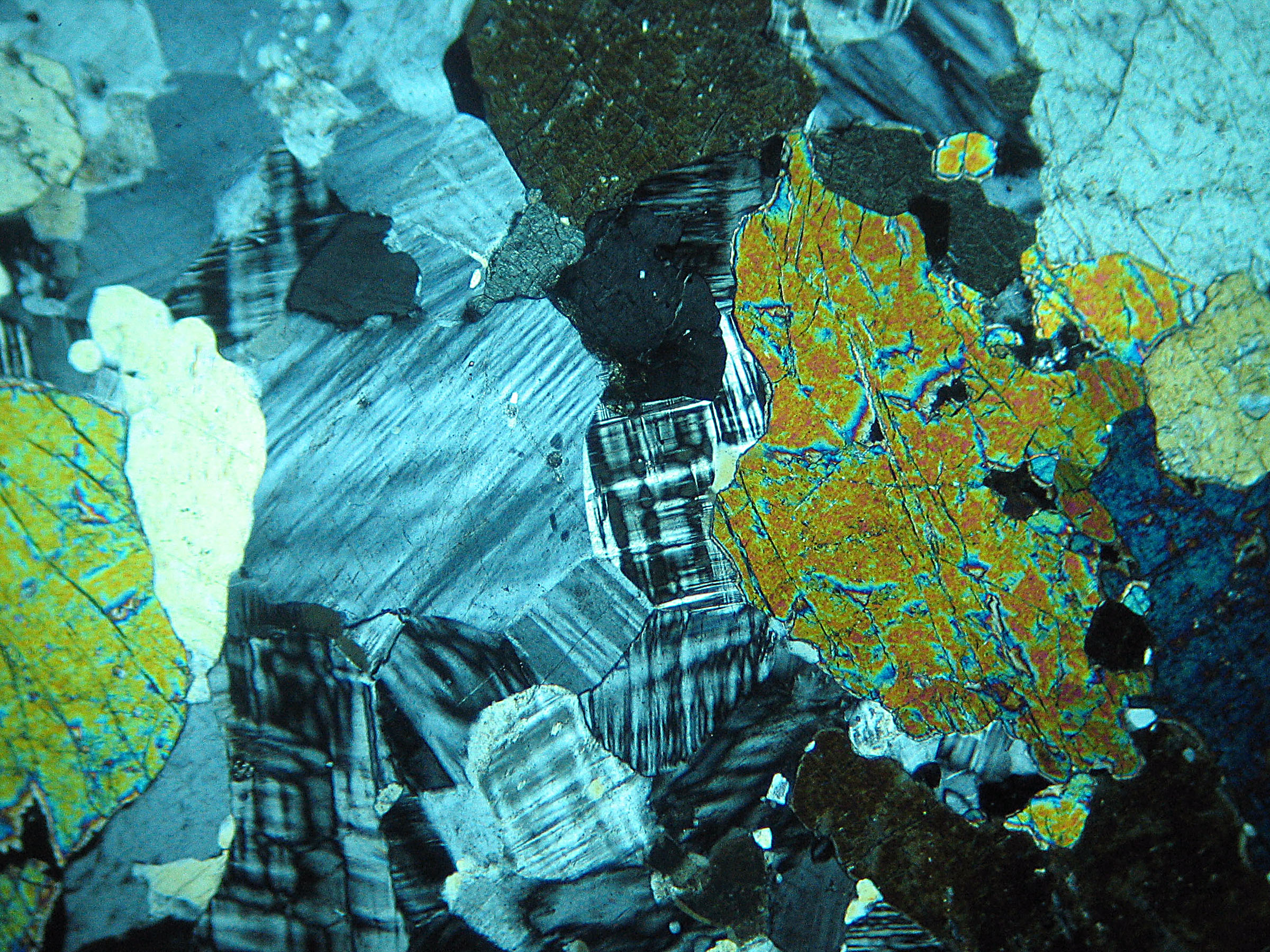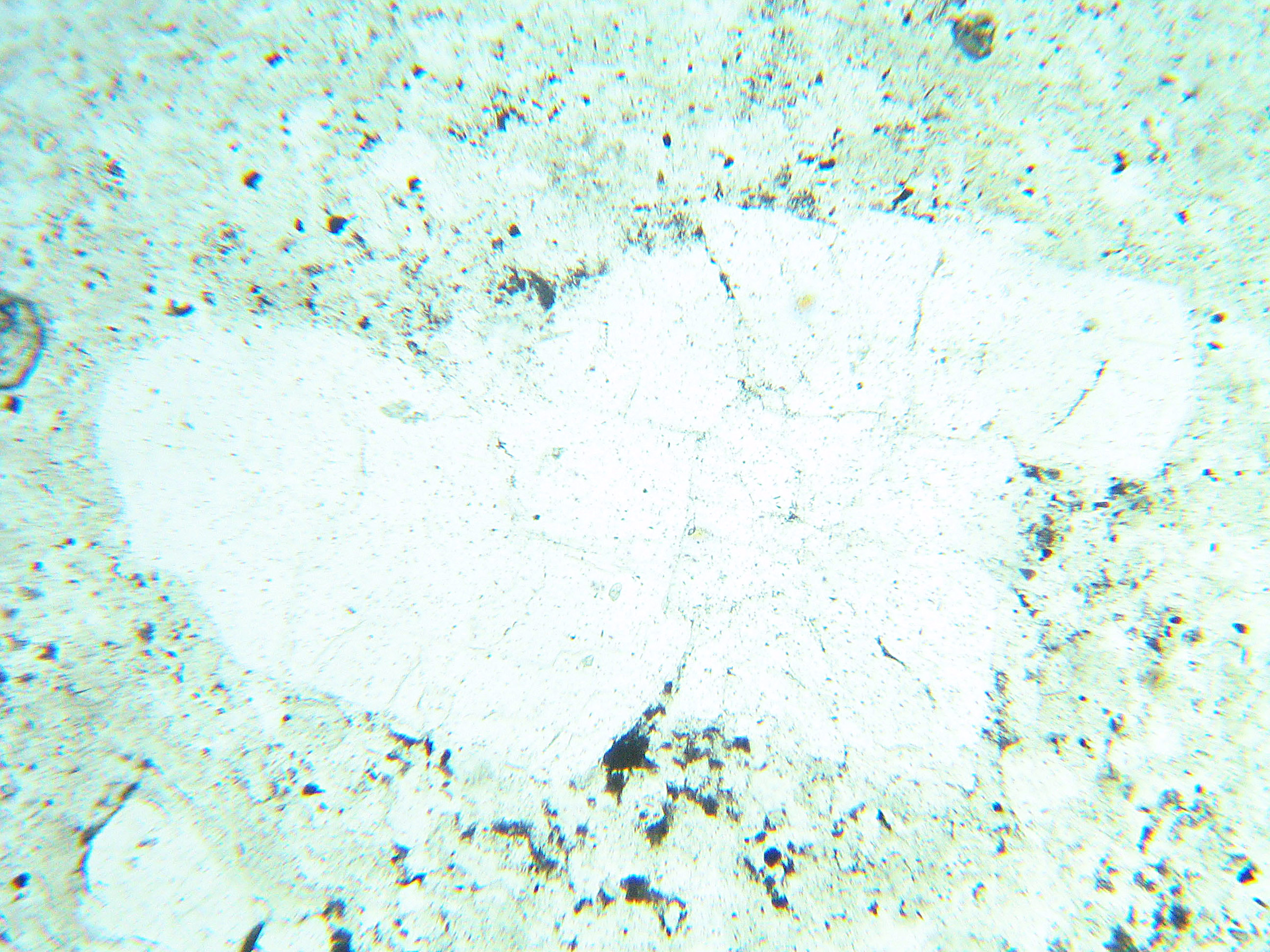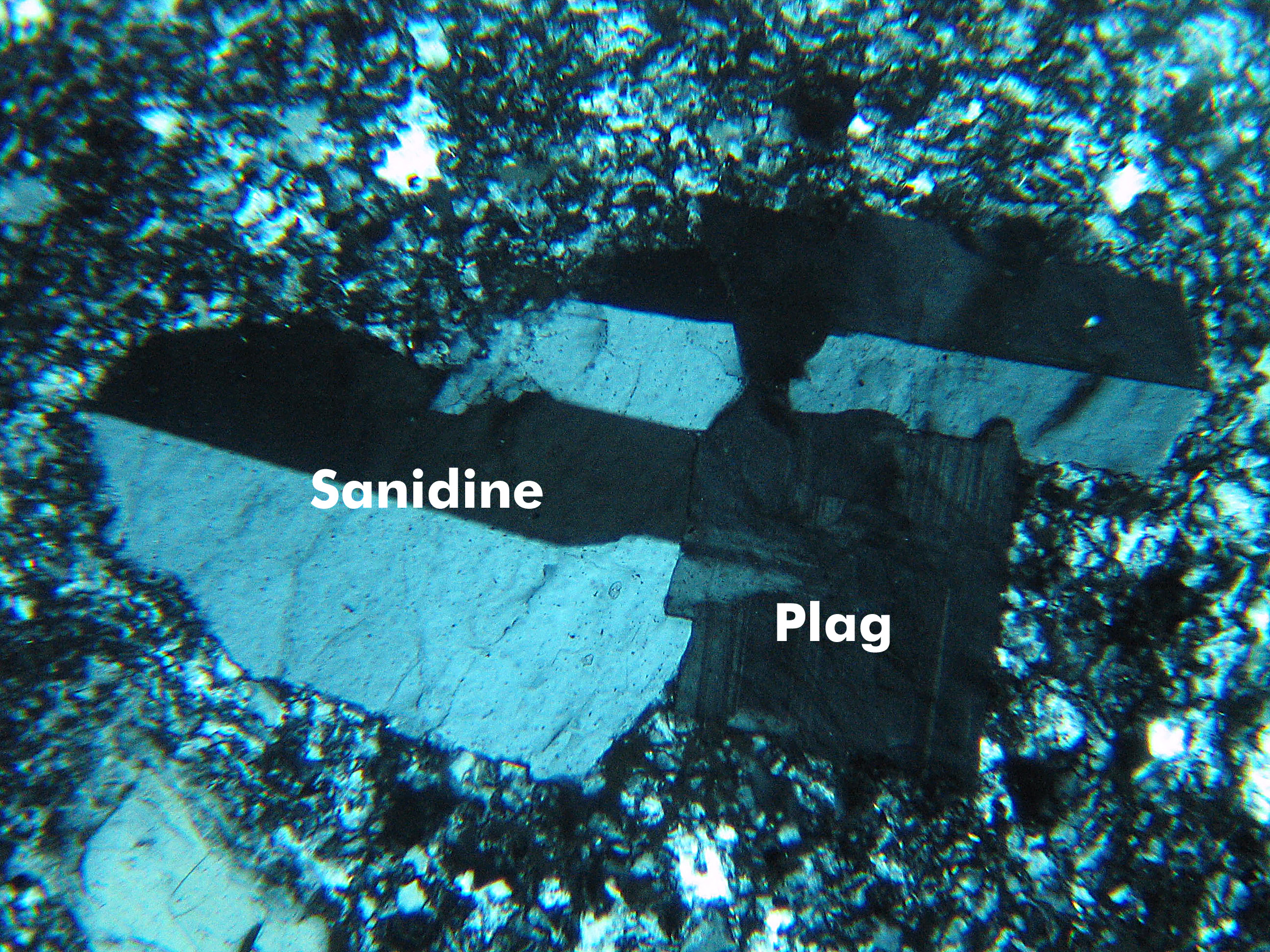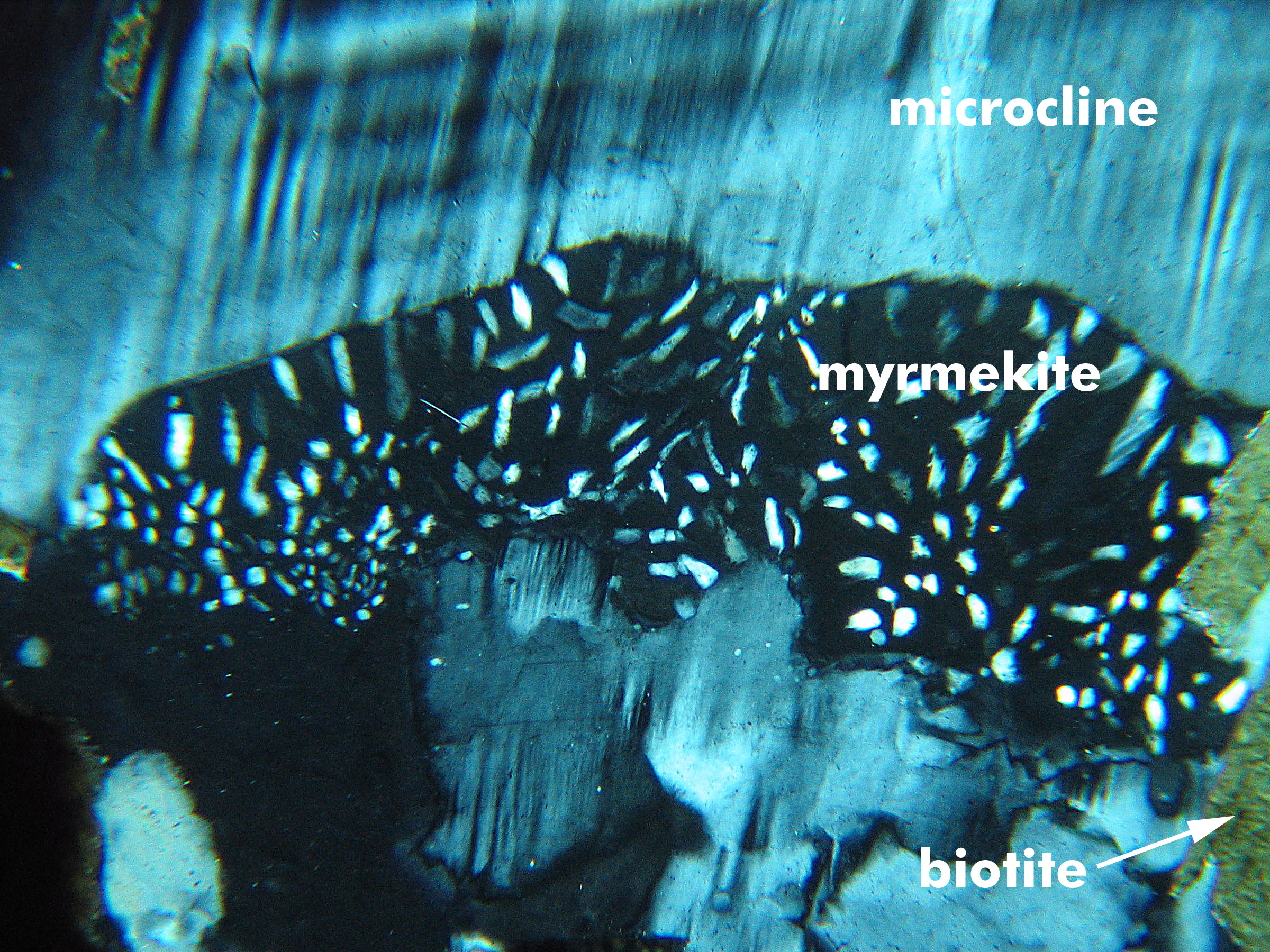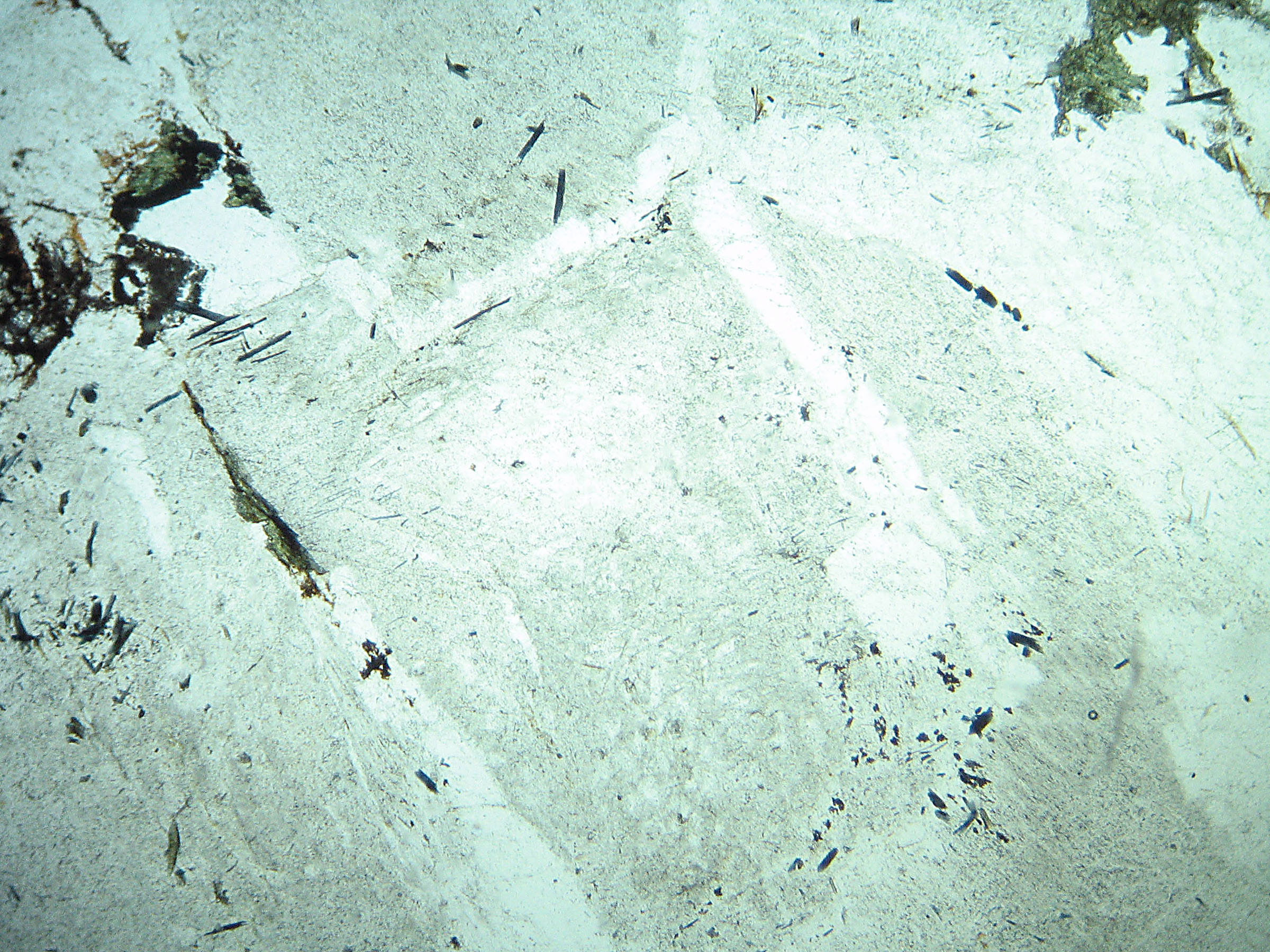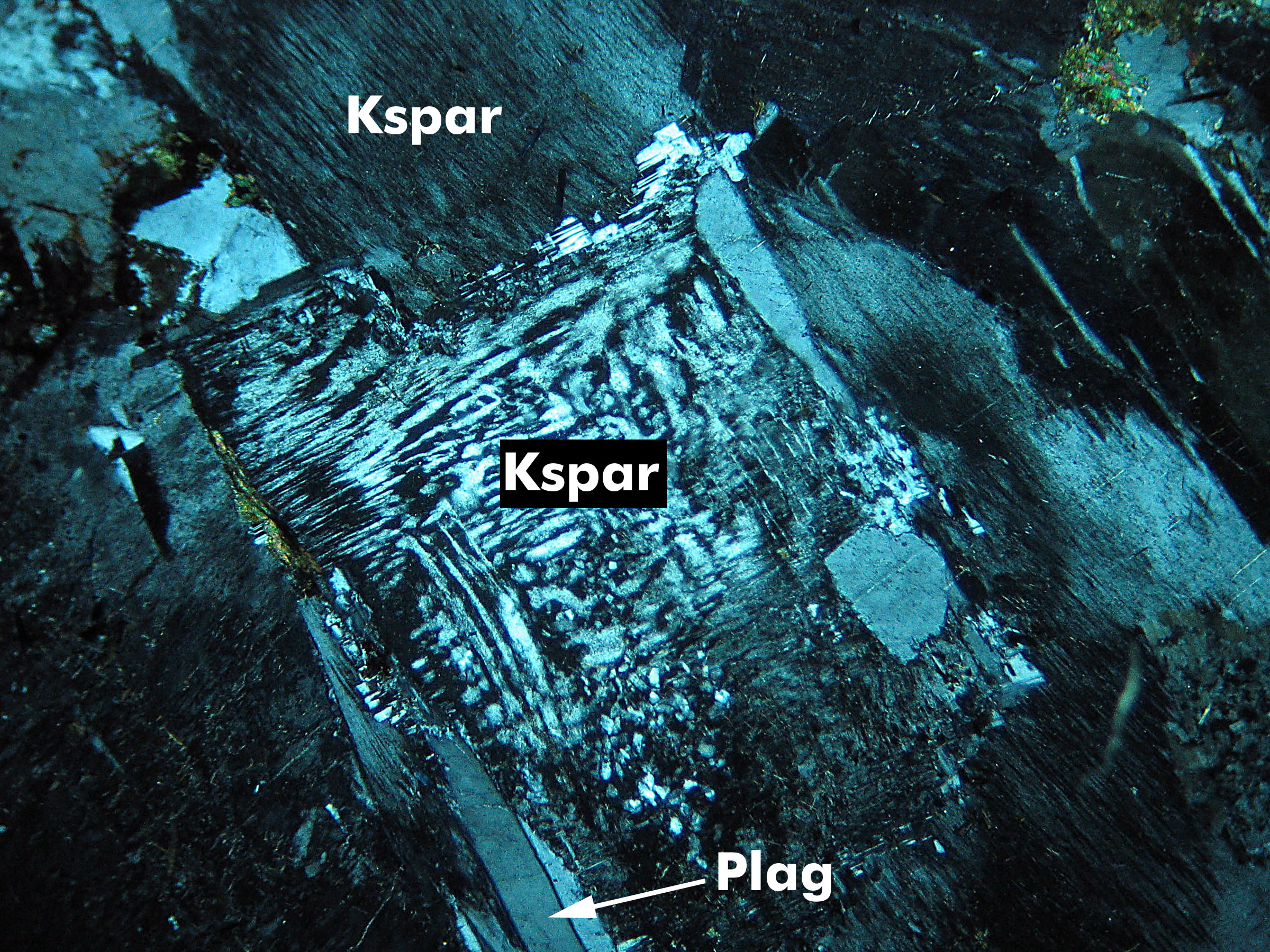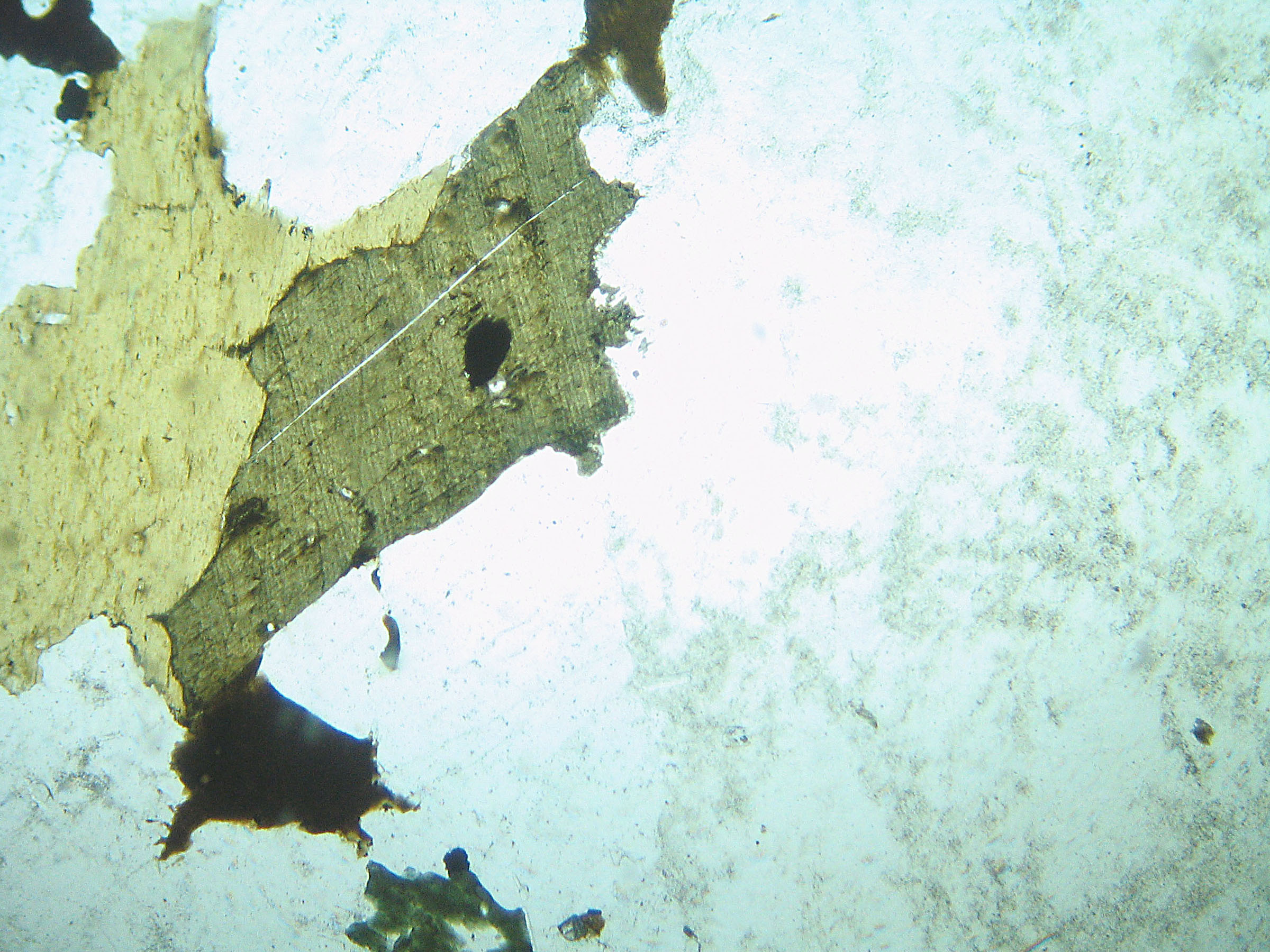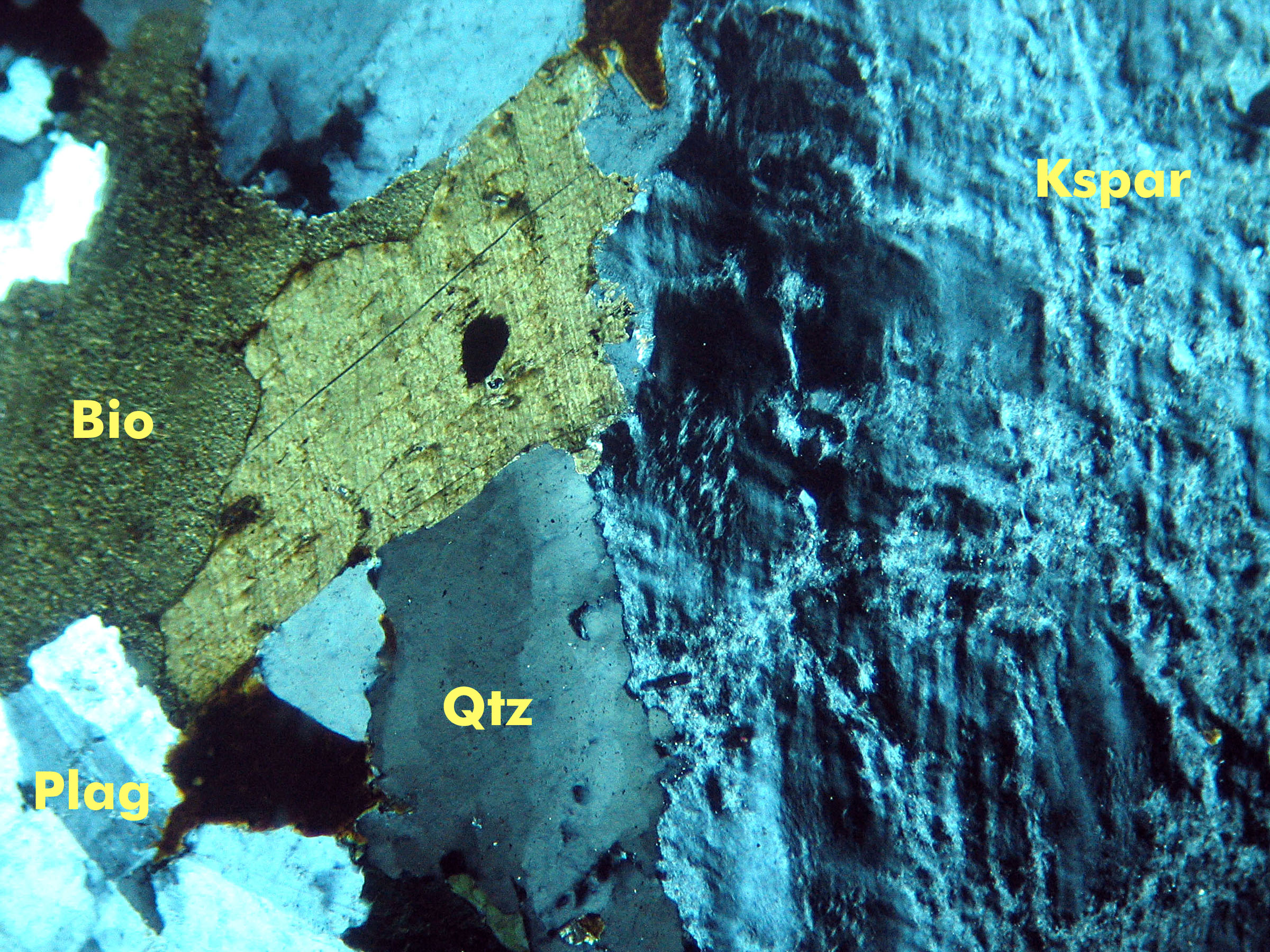|
K-feldspar (orthoclase, microcline,
sanidine and related varieties)
Occurrence
|
K-feldspar is widespread and common in a wide
variety of igneous and metamorphic rocks and in some sedimentary
rocks. Its chemistry and atomic arrangement are variable, so
optical properties vary as well. The three principle varieties
of K-feldspar are microcline (low temperature), orthoclase (medium
temperature), sanidine (high temperature). Other, rare, related
feldspar varieties include adularia and anorthoclase. Microcline
is found in silicic to intermediate plutonic rocks (not volcanics)
and some metamorphic rocks. Orthoclase is common in many silicic
plutonic rocks, less commonly in volcanic rocks. It is also found
in metamorphic and some sedimentary rocks. Sanidine is the common
K-feldspar in silicic volcanic rocks. |
Composition
The most significant end members are:
·orthoclase, KAlSi3O8
·albite, NaAlSi3O8 |
Identification
|
In general, keys to identifying K-feldspar
are its (lack of) color, its low birefringence, and its twinning.
In thin section, microcline, orthoclase and
sanidine are distinguished by their twinning,
optical sign, and 2Vo. |
Important properties
|
·Appearance and habit
- Microcline and orthoclase are generally anhedral; sanidine
is more likely to form euhedral phenocrysts. K-feldspar crystals
are typically tabular and often elongate. Exsolved Na-plagioclase
may give them a wormy or ribbony appearance (perthite). Although
there are two good cleavages, they
may not be well displayed. |
|
·Color - colorless, but
may be altered giving it a grainy or grayish appearance. Orthoclase
is frequently cloudy due to incipient alteration; sanidine is
generally clear. |
|
·Interference
colors - birefringence
is low, typically only white to gray interference
colors. |
|
·Twinning
common - Microcline is often characterized by a distinctive
plaid (cross-hatched) twinning with
twin domains that pinch and swell. Orthoclase and sanidine may
display simple twins that divide grains
into two domains. When untwinned, distinguishing the different
K-feldspar varieties may be difficult. |
|
·Intergrowths - Perthite
is created when an original high temperature feldspar unmixes
(exsolves) into two compositions. Perthites grains consist of
zones of Na-rich plagioclase alternating
in complicated patterns with zones of K-feldspar. |
|
·Interference figure -
Obtaining an interference figure for microcline is difficult
due to twinning. Orthoclase is biaxial
(-) with a large 2V. Sanidine is biaxial (-) with a very
small 2V (pseudouniaxial sometimes). |
Similar minerals:
|
·K-feldspar is similar to quartz, but quartz lacks cleavage, lacks
twinning, does not alter, exhibits
undulatory extinction, and is uniaxial. |
|
·K-feldspar can be difficult
to distinguish from plagioclase.
None of the K-feldspars develop parallel sided polysynthetic
twins, but sanidine and orthoclase
both may show simple twinning that
appears similar to plagioclase.
Microcline often shows distinctive "tartan plaid" twinning, but plagioclase may have two
sets of twins yielding a similar appearance.
In plagioclase, the contacts between
twins tend to be sharper, and the
twins do not pinch and swell. |
|
·K-feldspar is similar to quartz, but quartz lacks cleavage,
lacks twinning, does not alter, exhibits
undulatory extinction, and is uniaxial. |
|
